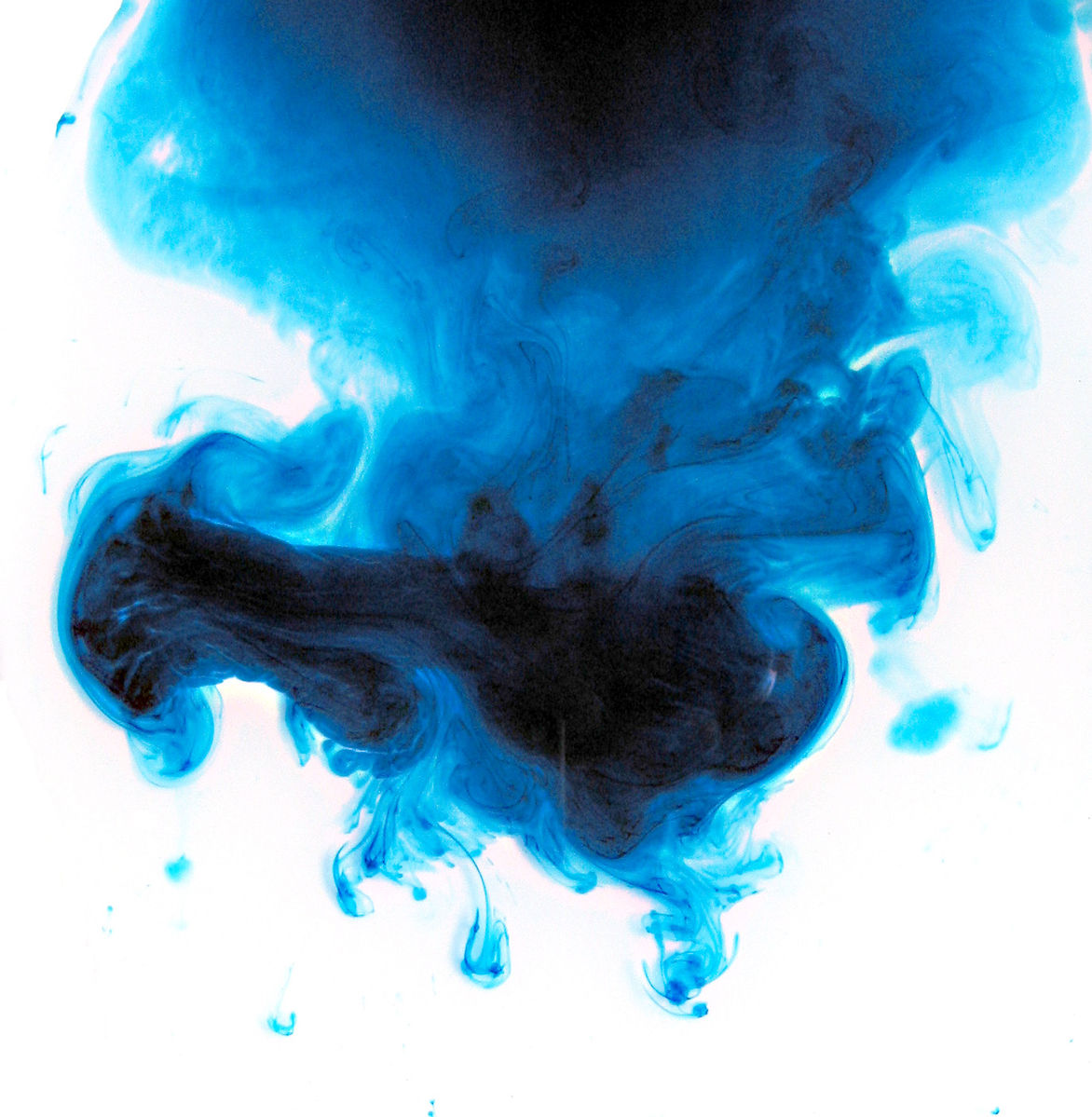We use all sorts of ink. Usually without giving it a second thought. And yet, inks have a very rich history. There are so many misconceptions… And no, printer ink is not the most expensive liquid on the planet! Let us try to see if inks can be interesting.
Natural inks
Humans sort of invented inks, but there were inks well before us. Consider cephalopod ink. Almost all squids, except some deep see species where nobody can appreciate light, are able to release inks. They have dedicated sacs and can release a siphon of ink.
Ink’s dark color is caused by its main constituent, melanin – the stuff that gives us a lovely suntan. Some inks are black, some blue-black and some are brown… Hey, they are like our inks! Squids and octopuses use ink like jets use flare: some generate smoke screens, and some create false body images good enough to full a turtle.
As humans, we find squid ink tasty, especially if we live in Spain or Japan. I personally love “black paella” and every time I visit Barcelona I taste some. Anna does not appreciate the way it colors my tongue and teeth. Fortunately, the effect is temporary. Squid ink is toxic to tumor cells. So if you smoke cigars, consider eating this substance.
Prehistoric inks
Our discovery of ink is older than written history. Archeologists discovered some primitive tools like abalone shells for grinding pigments like ochre and charcoal. These tools are probably 20000 years old. Cave paintings from that period are still beautiful and lasting. Some crayons that survived are dated above 100000 years old.
The paints invented 40000 years ago were still used in the renaissance.
Archaeological researchers have found the principal pigments used by early humans to be:
- Haematite, iron(III) oxide (Fe2O3), gives the mineral ochre a red color (strangely, if the particle size is large it will also give purple);
- Limonite, the mineral form of hydrated iron(III) oxide-hydroxide of varying composition (FeO(OH)·nH2O), for yellow;
- Limestone, calcite or crushed shells, mineral forms of calcium(II) carbonate (CaCO3), for white;
- Manganite, the mineral form of manganese oxide-hydroxide (MnO(OH)), for brown;
- Pyrolusite, the mineral form of manganese(IV) oxide (MnO2), that gives black;
- Charcoal, the mineral form of carbon (C), also gives black.
For early civilizations blue was the most difficult color to obtain in Europe. It was mostly obtained from powdered azurite (a form of copper carbonate) or the mineral lazurite which, because of its rarity, was often polished and worn as beads.
Pure graphite we use in pencils was discovered in 16th century, so it was not available to cave dwellers we know. Even Europeans used silverpoint instead of graphite pencils at least up to the 19th century.
However, the ancient crayons and pigments are not exactly ink used for writing…
The first writing inks
The first Babylonian script did not use ink, but the impression of a chisel-like tool on clay. Babylonians were not the only literate culture of their era.
The ink was used in Ancient Egypt for writing and drawing on papyrus from at least the 26th century BC. Egyptian red and black inks included iron and ocher as a pigment, in addition to phosphate, sulfate, chloride, and carboxylate ions; meanwhile, lead was used as a drier,
Chinese used graphite compounds mixed with animal glue from the third millennium BC. The best inks for drawing or painting on paper or silk are produced from the resin of the pine tree. India ink was first invented in China, though materials were often traded from India, hence the name.
Mesoamericans used mostly black ink derived from soot “scraped off the bottom of their cooking pots”. Rust (hematite) was used for reds. Most intriguingly a very specific “maya blue” color was produced from a native plant mixed with specific clay. Curiously these materials are very specific to the southeastern united states.
Blues were rare and prestigious. Funny, there are also Egyptian blue and Chinese blue, Persian blue and Celtic blue with very specific compounds to each writing culture.
Medieval inks
Romans discovered cheap quality black ink that was used on a large scale with papyrus and with parchment.
From the Middle Ages to the 19th century, iron gall ink was one of the most frequently made and used inks in Europe – so much so that it was often referred to as ‘common ink’. It was made in batches by hand until the 18th century, when it was produced on a commercial scale. The ubiquitous rusty browns (and paper damage) of manuscripts written in iron gall ink make it one of the most recognizable inks in the world.
At its most basic recipe – the earliest of which is found in Pliny – iron gall ink is comprised of four components: gall nuts, iron sulfate, water and gum arabic. Gall nuts form on oak trees as a defense against the irritant of hatching insects and are the source for the ink’s tannins – biomolecules used for tanning leather and dyeing textiles. The iron sulfate came directly from iron mining or was acquired as a by-product of alum manufacturing. The gum arabic served as the binding agent, making the ink more viscous, ensuring the pigment particles stayed properly suspended in the water, as well as binding the ink to its intended writing surface. Some iron gall recipes call for additional ingredients, like sugar or honey (plasticising agents), pomegranate rinds as another source of tannins, dyes or pigments to enhance color and preservatives like alcohol or vinegar to prolong the ink’s shelf life.
One 12th century ink recipe called for hawthorn branches to be cut in the spring and left to dry. Then the bark was pounded from the branches and soaked in water for eight days. The water was boiled until it thickened and turned black. The wine was added during boiling. The ink was poured into special bags and hung in the sun. Once dried, the mixture was mixed with wine and iron salt over a fire to make the final ink.
There is a huge issue with iron gall ink: it oxidizes paper and damages it over time. No treatment undoes damage already caused by acidic ink. Deterioration can only be stopped or slowed. So we needed to change our inks once again.
Inks are expensive
No ink I know of is as expensive as spider poison or even scorpion poison, or the most expensive alcohol in precious bottles. Yet inks consistently find their place in the list of the 20 most expensive liquids. Most of these inks are printing or fountain pen inks.
The reservoir pen, which may have been the first fountain pen, dates back to 953, when Ma’ād al-Mu’izz, the caliph of Egypt, demanded a pen that would not stain his hands or clothes, and was provided with a pen that held ink in a reservoir. Neither of these handwriting inks could adhere to printing surfaces without creating blurs. Eventually an oily, varnish-like ink made of soot, turpentine, and walnut oil was created specifically for the printing press.
Printer ink costs around 2000 dollars per gallon. Why? Because of the business model of printer manufacturers. They partially sponsor the printer itself to make people buy very specific ink with huge profit margins.
Quality fountain pen inks like Pelikan Edelstein or Pilot Iroshizuku cost around 20 dollars per 50ml bottle. (I use these particular brands and get very good prices on ebay with the free shipment from Japan). This brings the price to circa 2000 dollars per gallon. Some colors like real sepia or hakase sepia (probably produced from cuttlefish) are even more expensive. There is a very strange 79ink made of pure gold, so it is probably as expensive as gold… Liquid gold is supposed to cost around 1200 dollars per gallon, so something is wrong in my computations…
It is funny to think that my fountain pen ink can be more expensive than gold, but I do not use much of it. Fortunately, 50 ml of quality inks can last for several years and thousands of pages.
A full circle
So we take cuttlefish ink (or something similar), put it into expensive medieval containers, and use in our modern fountain pens. Or put something simpler and more proprietary into printer cartridges. And this was the best way to preserve human history before computers were discovered…
All the fancy iron gall medieval inks used to destroy paper, and some of the more industrial inks used to be mildly poisonous… So we do not use those anymore.
There are very oily rubber-like inks we pressurize in our ballpens, like Fisher pens that can write even in space. Yet the experience of writing with modern pens is not as lucrative as using a quality fountain pen. Or a printer…

